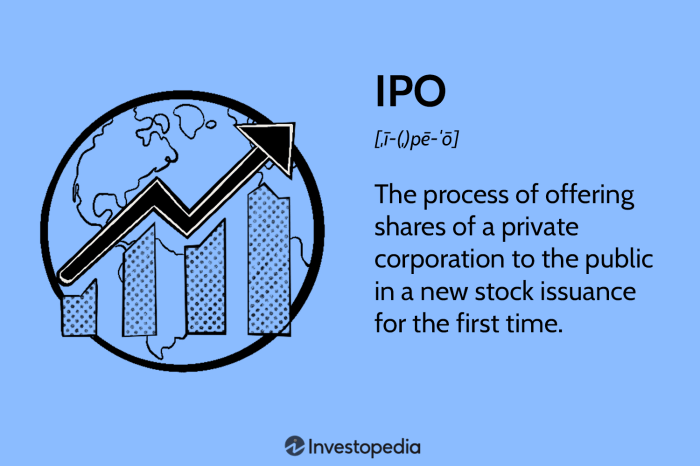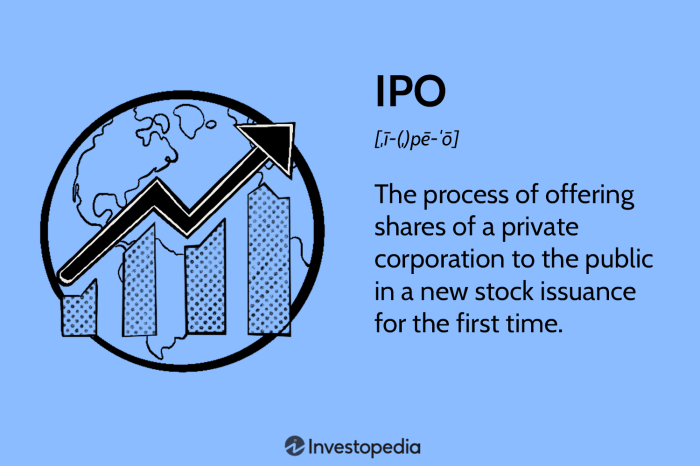Arm semiconductor ipo september nvidia – Arm Semiconductor IPO: September’s Big Move and Nvidia’s Role – The tech world is buzzing with the upcoming IPO of Arm, the semiconductor giant behind the architecture powering billions of devices. This move marks a significant shift in the industry, particularly with the ongoing relationship between Arm and Nvidia, who attempted to acquire Arm in 2020.
This IPO is not just about Arm’s financial future; it’s a potential game-changer for the entire semiconductor landscape, particularly the GPU and AI chip markets.
Arm’s IPO, expected in September, is a major event for the semiconductor industry. Arm, known for its energy-efficient processor designs, has become the dominant force in mobile devices. With the rise of AI and the Internet of Things, Arm’s technology is poised to expand into new markets, leading to potential competition with giants like Nvidia.
Arm Semiconductor IPO Overview

Arm Holdings, a British multinational technology company, has been a pivotal player in the semiconductor industry for over three decades. Its influence is undeniable, as it has become the leading provider of processor designs for mobile devices, embedded systems, and other computing applications.
Arm’s business model revolves around licensing its processor designs to other companies, enabling them to develop their own chips based on Arm’s architecture. This approach has allowed Arm to reach a vast market and contribute to the development of a wide range of electronic devices.
Arm’s Business Model and Licensing Strategy
Arm’s business model is based on licensing its intellectual property (IP) to semiconductor companies. This IP includes processor designs, system-on-chip (SoC) architectures, and software tools. Arm’s licensing strategy is designed to be flexible and adaptable to meet the needs of its diverse customer base.
Companies can choose from a variety of Arm processor designs, customize them to meet their specific requirements, and integrate them into their own chips.
Factors Leading to Arm’s IPO
The decision to pursue an IPO in September 2023 was driven by several factors, including:
- Growth in the Semiconductor Market:The global semiconductor market is expected to continue growing in the coming years, driven by increasing demand for mobile devices, data centers, and other electronic applications. Arm’s position as a leading provider of processor designs positions it well to capitalize on this growth.
- Expanding into New Markets:Arm is expanding its reach into new markets, such as automotive, industrial, and Internet of Things (IoT). An IPO will provide Arm with the capital needed to invest in these emerging markets and accelerate its growth.
- Increased Competition:Arm faces competition from other processor design companies, such as RISC-V and Intel. An IPO will enable Arm to invest in research and development, maintain its technological edge, and compete effectively in the market.
Financial Details of the IPO
Arm’s IPO is expected to be one of the largest technology offerings of the year. The company is aiming for a valuation of around $60 billion, with plans to offer approximately 10% of its shares to the public. The proceeds from the IPO will be used to fund Arm’s growth initiatives, including research and development, acquisitions, and expansion into new markets.
Market Analysis and Competitive Landscape
The semiconductor industry is experiencing a period of rapid growth, driven by factors such as the increasing demand for computing power, the proliferation of connected devices, and the rise of artificial intelligence (AI). This growth has created a dynamic and competitive landscape, where companies like Arm are vying for market share.
Current State of the Semiconductor Industry, Arm semiconductor ipo september nvidia
The semiconductor industry is characterized by a number of key trends and growth drivers. * Increased demand for computing power: The demand for computing power is increasing rapidly, driven by the growth of data-intensive applications such as AI, cloud computing, and the Internet of Things (IoT).
Proliferation of connected devices
The number of connected devices is growing exponentially, leading to an increased demand for semiconductors that can power these devices.
Rise of artificial intelligence (AI)
AI is rapidly transforming various industries, leading to an increased demand for powerful processors that can handle complex AI workloads.
Competitive Landscape for Arm
Arm faces competition from a number of major players in the semiconductor industry, including:* Intel: Intel is a dominant player in the x86 processor market, which is used in PCs and servers.
AMD
AMD is a competitor to Intel in the x86 processor market.
Nvidia
Nvidia is a leading player in the graphics processing unit (GPU) market, which is used for gaming, AI, and other applications.
Qualcomm
Qualcomm is a leading provider of mobile processors, which are used in smartphones and other mobile devices.
MediaTek
MediaTek is a major player in the mobile processor market, competing with Qualcomm.These companies have their own strengths and weaknesses, which they leverage to compete in the market.* Intel: Intel has a strong brand name and a long history of innovation in the x86 processor market.
However, Intel has faced challenges in recent years from AMD and Nvidia, which have made significant advancements in processor performance.
AMD
AMD has gained market share in recent years by offering high-performance processors at competitive prices. AMD’s Ryzen processors are known for their performance and value.
Nvidia
Nvidia is a leader in the GPU market, which is becoming increasingly important for AI and other applications. Nvidia’s GPUs are known for their high performance and parallel processing capabilities.
Qualcomm
Qualcomm is a leading provider of mobile processors, which are used in smartphones and other mobile devices. Qualcomm’s processors are known for their power efficiency and integration of cellular connectivity.
MediaTek
MediaTek is a major player in the mobile processor market, competing with Qualcomm. MediaTek offers a wide range of processors, including low-power processors for budget-friendly devices and high-performance processors for flagship smartphones.
Market Opportunities and Challenges for Arm
Arm’s IPO presents both opportunities and challenges for the company.* Opportunities:
Growth of the mobile market
The mobile market is expected to continue to grow in the coming years, providing opportunities for Arm to expand its market share.
Rise of the Internet of Things (IoT)
The IoT is expected to create a significant demand for low-power processors, which are a key strength of Arm.
Growth of the automotive market
The automotive industry is rapidly adopting advanced technologies such as autonomous driving, which requires powerful processors. Arm is well-positioned to capitalize on this trend.
Challenges
Competition from other semiconductor companies
Arm faces intense competition from other semiconductor companies, such as Intel, AMD, Nvidia, and Qualcomm.
Maintaining its technology leadership
Arm needs to continue to innovate and develop new technologies to stay ahead of the competition.
Scaling its operations
Arm needs to scale its operations to meet the growing demand for its processors.
Comparison of Arm’s Technology and Business Model with Other Semiconductor Players
Arm’s technology and business model are distinct from those of other major semiconductor players like Nvidia.* Technology: Arm designs and licenses processor architectures, while other semiconductor players like Nvidia design and manufacture their own processors.
Business Model
Arm’s business model is based on licensing its processor architectures to other companies, while other semiconductor players like Nvidia sell their processors directly to customers.This difference in technology and business model gives Arm a unique position in the semiconductor industry.
Arm’s licensing model allows it to reach a wider market and benefit from the economies of scale of its licensees.
Arm’s licensing model is a key differentiator, allowing the company to reach a wider market and benefit from the economies of scale of its licensees.
Find out further about the benefits of how will chatgpt dall e and other ai tools impact the future of work we asked 5 experts that can provide significant benefits.
Potential Impact of the IPO on Nvidia: Arm Semiconductor Ipo September Nvidia
The Arm IPO holds significant implications for Nvidia, given their longstanding partnership and Nvidia’s recent attempt to acquire Arm. The IPO will reshape the dynamics between these companies, impacting the competitive landscape and influencing Nvidia’s future strategies.
The Impact on the Competitive Landscape
Arm’s IPO will undoubtedly influence the competitive landscape in the GPU and AI chip markets. As an independent company, Arm will have more flexibility in licensing its architecture to a broader range of companies, potentially leading to increased competition for Nvidia.
For example, companies like Qualcomm and AMD could leverage Arm’s architecture to develop more competitive AI chips, potentially eroding Nvidia’s dominance in this market.
“Arm’s IPO could lead to a more fragmented landscape, with multiple players vying for market share in the AI chip market.”
Analyst at Gartner
Potential for Collaboration and Competition
Despite the potential for increased competition, Arm and Nvidia are likely to continue collaborating in some areas. For instance, Nvidia’s existing products, like the Jetson platform, rely heavily on Arm’s architecture. However, competition is also likely to intensify in areas where both companies are vying for market share, such as the data center and automotive markets.
Nvidia’s Future Business Strategy
Arm’s IPO could prompt Nvidia to adjust its business strategy and product development efforts. Nvidia may need to:* Focus on differentiation:Develop more unique and specialized GPU and AI chips to maintain its competitive edge.
Strengthen partnerships
Build stronger relationships with other companies in the ecosystem to secure access to key technologies and markets.
Invest in R&D
Increase investments in research and development to create innovative products and solutions.Nvidia’s future success will depend on its ability to adapt to the changing landscape and leverage its strengths to navigate the evolving competitive dynamics.
Implications for the Semiconductor Industry

Arm’s IPO is poised to have a significant impact on the broader semiconductor industry, potentially reshaping the competitive landscape and driving innovation. By becoming a publicly traded company, Arm will have access to new capital and greater market visibility, which could fuel its growth and expansion.
Increased Competition and Innovation
Arm’s IPO could intensify competition within the semiconductor industry, leading to a more dynamic and innovative landscape. With increased resources and market visibility, Arm may be able to invest more aggressively in research and development, driving advancements in processor design and architecture.
This could lead to the emergence of new and more powerful processors, benefiting consumers and businesses alike.
Accelerated Adoption of ARM-Based Processors
Arm’s IPO could accelerate the adoption of ARM-based processors across various applications, particularly in the rapidly growing markets of mobile devices, IoT, and automotive. As a publicly traded company, Arm will be under pressure to deliver strong financial performance, incentivizing it to expand its reach and market share.
This could lead to increased partnerships and collaborations with other semiconductor companies, driving the adoption of ARM-based processors in new and emerging markets.
Potential Risks and Opportunities for Other Semiconductor Companies
The impact of Arm’s IPO on other semiconductor companies will be multifaceted, presenting both risks and opportunities. Some companies, particularly those that rely heavily on ARM’s intellectual property, may face increased competition and pressure to innovate. However, the IPO could also create opportunities for collaboration and partnership, allowing companies to leverage Arm’s technology and resources to develop new and innovative products.
Key Players in the Semiconductor Industry
The semiconductor industry is a complex ecosystem with numerous players, each with its own unique strengths and capabilities. The following table Artikels some of the key players in the industry, their core businesses, and their potential relationship with Arm:
| Company | Core Business | Relationship with Arm |
|---|---|---|
| Intel | CPU and chipset manufacturing | Competitor in the CPU market, but also a licensee of Arm technology |
| Qualcomm | Mobile chipsets and wireless technology | Major licensee of Arm technology, particularly for mobile processors |
| Samsung | Memory and processor manufacturing | Major licensee of Arm technology, using it for both mobile and server processors |
| TSMC | Foundry services for semiconductor manufacturing | Partners with Arm to provide manufacturing services for ARM-based processors |
| Nvidia | Graphics processing units (GPUs) and AI technology | Potential competitor to Arm in the processor market, but also a licensee of Arm technology |
Future Outlook for Arm

Arm’s future is brimming with potential, driven by the increasing adoption of its architecture across diverse computing landscapes. The company faces both opportunities and challenges in navigating the ever-evolving technological landscape.
Key Challenges and Opportunities
Arm’s success hinges on its ability to address key challenges and capitalize on emerging opportunities. The company must continuously innovate to maintain its competitive edge in a rapidly evolving industry.
- Maintaining Technological Leadership:Arm must continually invest in research and development to stay ahead of the curve in areas like artificial intelligence (AI), 5G, and the Internet of Things (IoT). This includes developing new processor designs, optimizing for emerging workloads, and collaborating with ecosystem partners to drive innovation.
- Securing Market Share in Emerging Markets:Arm needs to expand its presence in rapidly growing markets such as automotive, data centers, and edge computing. This requires tailoring its offerings to specific market needs and forging strategic partnerships with key players in these sectors.
- Addressing Security Concerns:As Arm’s footprint expands, so do the security challenges. The company must prioritize robust security features in its designs and work closely with its ecosystem to address vulnerabilities and mitigate potential threats.
- Navigating the Rise of Open Source:The increasing popularity of open-source architectures presents both opportunities and challenges for Arm. While it can leverage open-source communities for innovation, it must also protect its intellectual property and maintain its competitive advantage.
Growth Trajectory in Key Markets
Arm’s growth prospects are strong across various markets, fueled by the increasing demand for powerful and energy-efficient computing solutions.
- Mobile:Arm remains the dominant architecture in the mobile space, powering billions of smartphones and tablets worldwide. Its energy efficiency and scalability make it well-suited for the evolving needs of mobile devices, including advanced multimedia, AI, and 5G connectivity.
- Automotive:The automotive industry is undergoing a rapid transformation, driven by the rise of autonomous vehicles, advanced driver-assistance systems (ADAS), and connected car technologies. Arm’s architecture is ideally positioned to address the demanding requirements of these applications, including real-time processing, safety, and security.
- Data Centers:Arm is gaining traction in the data center market, driven by the need for energy-efficient and scalable solutions for cloud computing, AI, and high-performance computing (HPC). Arm’s architecture offers significant advantages in power consumption and performance per watt, making it an attractive alternative to traditional x86-based systems.
Timeline of Key Events and Milestones
Arm’s future will be shaped by a series of key events and milestones that will drive its growth and evolution.
- Continued Expansion in Emerging Markets:Arm is expected to expand its presence in markets like automotive, data centers, and edge computing, driven by the growing demand for its architecture in these sectors.
- Advancements in AI and Machine Learning:Arm is actively developing new processor designs and technologies to optimize for AI and machine learning workloads, enabling the deployment of intelligent applications across various devices and platforms.
- Integration of 5G and Beyond:Arm is working closely with ecosystem partners to ensure its architecture supports the evolving requirements of 5G and future wireless technologies, enabling seamless connectivity and high-bandwidth data transfer.
- Adoption of Open Source and Collaborative Development:Arm is embracing open-source initiatives and collaborating with industry partners to foster innovation and accelerate the development of new technologies.
Key Factors Influencing Arm’s Success
Arm’s success in the post-IPO era will be influenced by a combination of factors.





